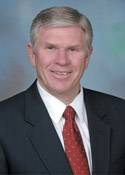Culture Must Promote Purpose
 |
We also hear about the need to change culture, especially within government. Many leaders are recognizing that to remain relevant they must adjust the culture of their organization and adapt to the changing world. Yet, others prefer to ignore the need for cultural change and allow Darwinian practices to dictate their future and limit their choices.
The ambiguous threats of manmade and natural disasters continue to put pressure on government leaders. Poignant lessons from events such as 9/11 and Hurricane Katrina prove that government must consider new approaches to national security and public safety. In part, government must find ways to overcome the barriers, boundaries and silos dividing agencies that have overlapping or shared missions. Bitter experience proves that such divisions weaken the government’s ability to anticipate, assess and respond to crises.
Today, too many complain about their cultural issues without taking the initiative for affecting change. Although it’s tough, time-consuming work to turn a Titanic, it can be done. Culture does not have to be a four-letter word or your Nemesis. So, do you want to change your culture?
Leaders today must determine how to achieve strategic objectives by making their organizational culture a positive asset. It’s best to begin by identifying an organization’s purpose for existence and putting in place a plan to turn the entire organization into a strategically focused entity.
In June 2000, as the newly assigned director of the Defense Information Systems Agency (DISA), I began my job leading this storied service team optimistically. However, I was quickly jolted to a harsh reality. My customers—the four-star combatant commanders, service secretaries and defense agency directors—expressed serious displeasure with DISA. Their message to me was that they didn’t feel we were providing the best capabilities at the most reasonable cost to execute their missions.
It became obvious that the DISA legacy of delivering quality systems and services was not synchronized with current warfighter desires. As a result, we were at risk.
In response, we at DISA first interfaced directly with each of our customer’s most senior leaders to understand their requirements and to commit ourselves to answering their most pressing information technology needs. Then, we addressed our internal DISA culture. It certainly wasn’t going to be quick or easy to stimulate cultural change within a tradition-rich organization of more than 8,000 people located throughout the world. But we identified our most influential adaptive leaders and pressed forward. When a combatant commander says you’re not meeting his needs, it’s non-negotiable: Fix the problems, or you’ll be out of business. We identified quickly that DISA’s adopters were our future—ready to explore and apply innovative solutions, they drove our cultural change through customer focus, innovative thought and quick delivery.
We changed the DISA culture by reinforcing our core mission as a combat support agency: customer support. Identifying our customers, talking with them and making customer focus our guiding principle became the foundation for our cultural adjustment. Customer focus and the resulting positive cultural changes throughout DISA came just in time to prepare us to respond with distinction to the horrific events of 9/11.
The changing work force demographic currently underway will naturally put government and industry into a more networked context. However, for this to occur with the greatest efficiency, a focus on changing current culture and unifying three generations into one networked work force will be a tremendous challenge. Leaders today have the added challenge of cultivating and molding the best characteristics of three generations—Baby Boomers, Generation X and Generation Y—through intergenerational harmonization.
In coming years Generation Y will dominate the workplace, and its characteristics will influence and change the culture of the work force. Generation Y is considered a significant attribute to today’s global economy—the most diverse and educated generation to date and generally very accepting of different races and ethnicities. This group enjoys opportunities to be creative, collaborative and innovative, and it seeks exciting and challenging experiences. This work force is naturally competitive but focused on meeting mission goals.
While only at the cusp of the advancing technological era, members of Generation Y are “tech savvy,” expect access to information and want it with speed and accuracy. This generation is not satisfied with the passive attributes of information sharing. Its members proactively obtain information based on their emergent knowledge and solution requirements. Generation Y also leverages technology to create social networks that embrace open communication. Information originates from vast networks and cyber “networks of networks” of people, most of whom will never meet in person.
Our nation’s secret weapon for future success will be the Generation Y work force. We need to learn more about, embrace and benefit from the powerful characteristics of this dynamic emerging generation. Successful leaders will recognize that our future lies with Generation Y, with intergenerational harmonization and by ensuring that an organization’s culture is focused on achieving organizational purpose.




Comments